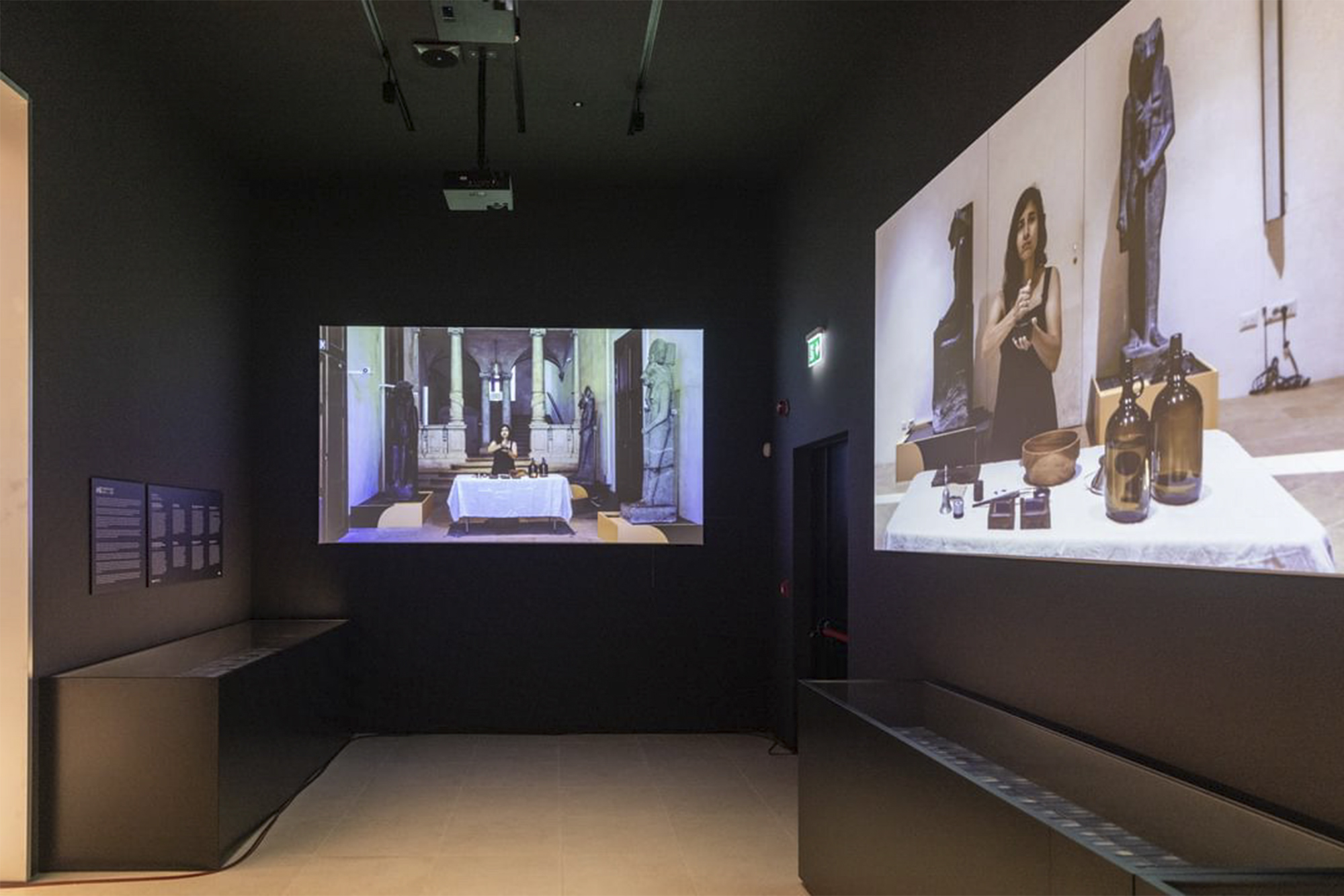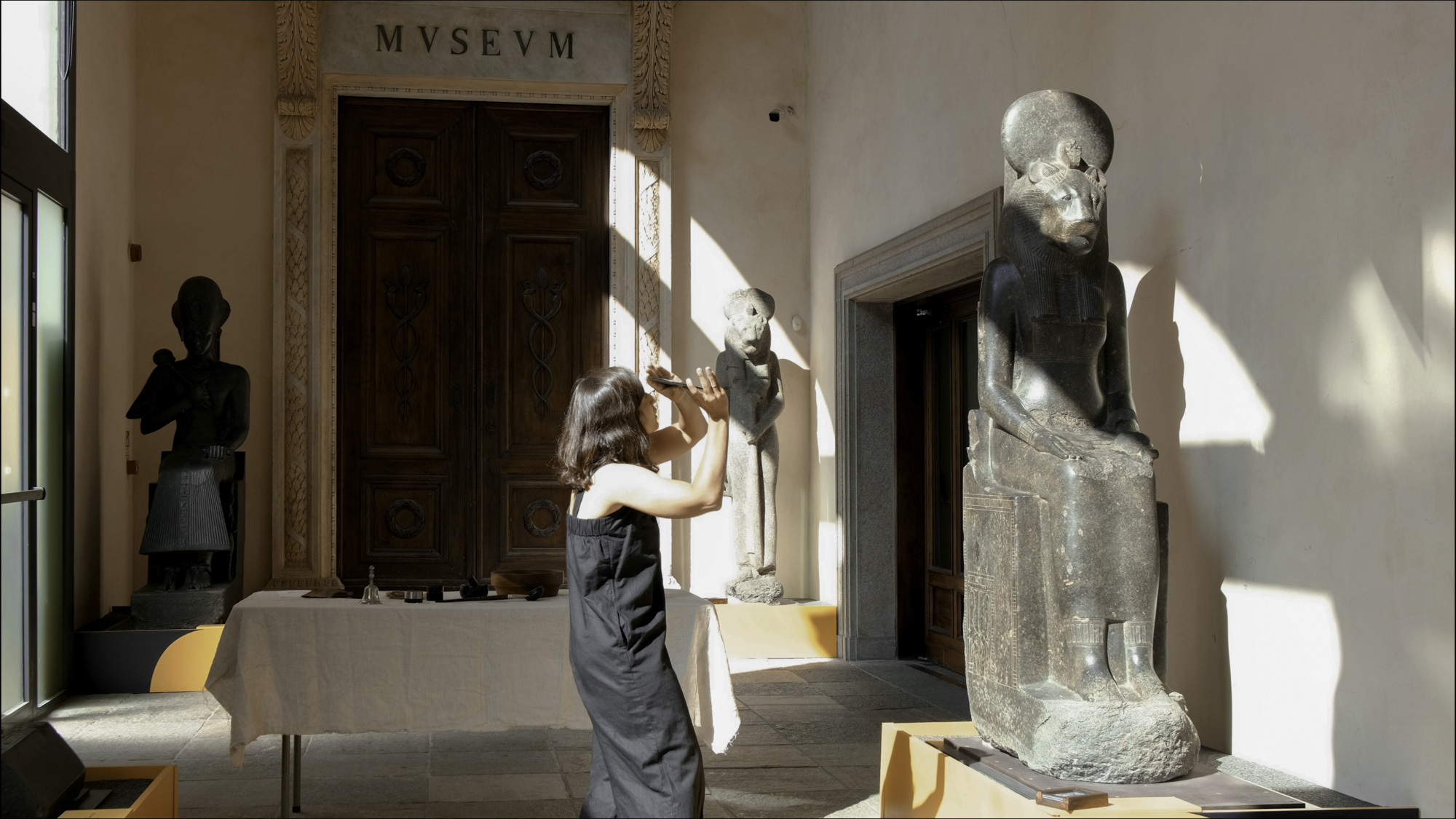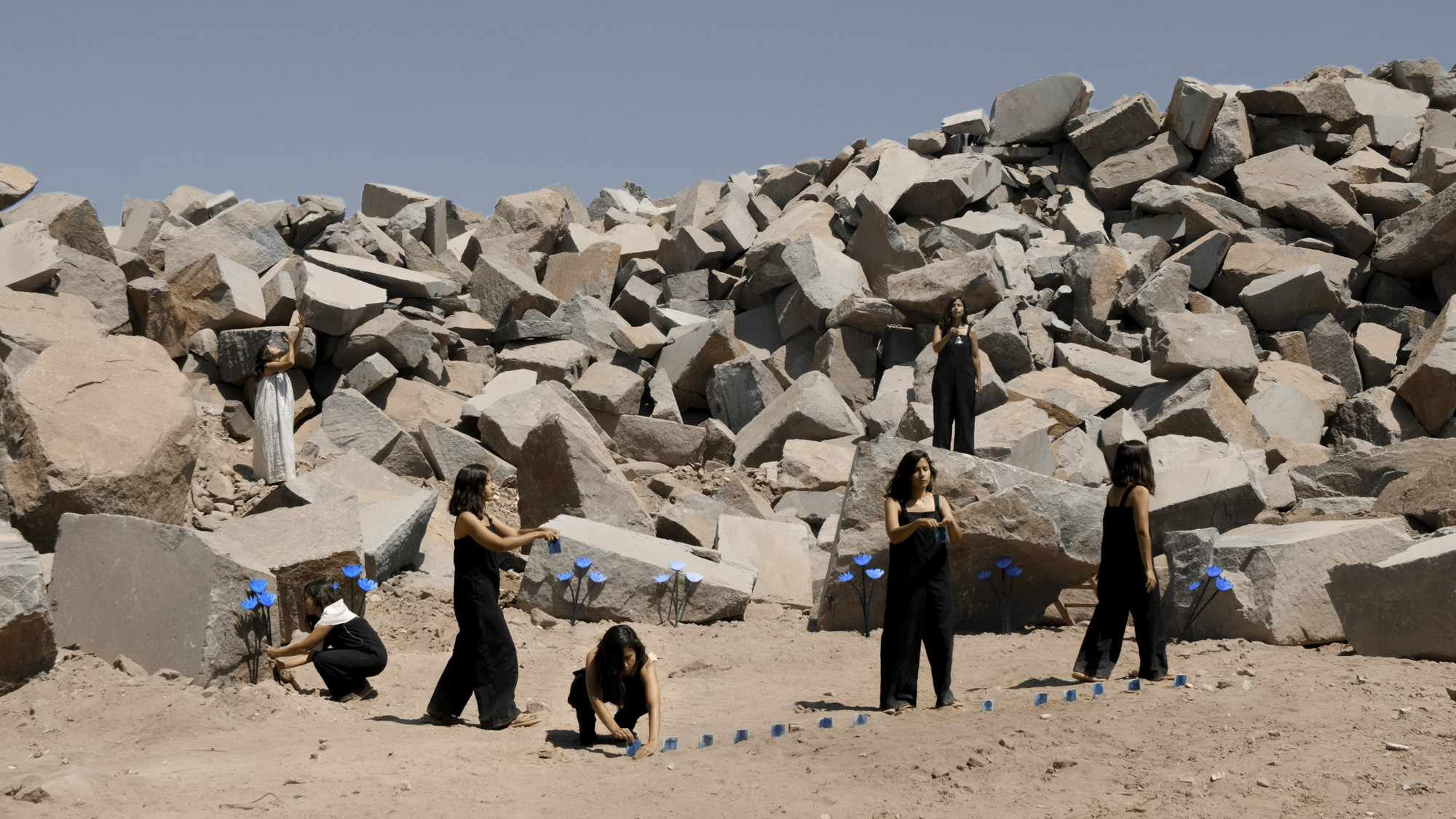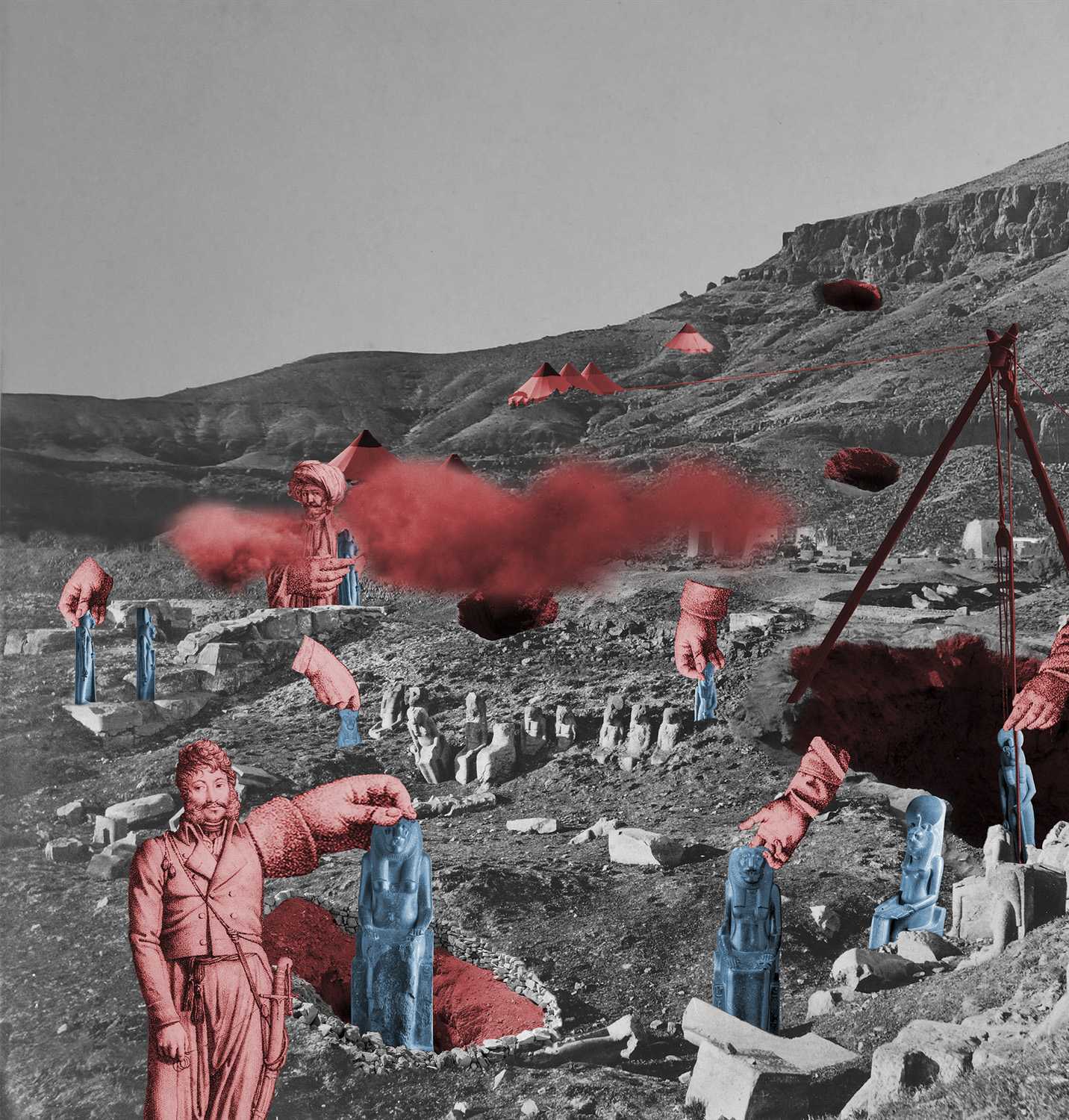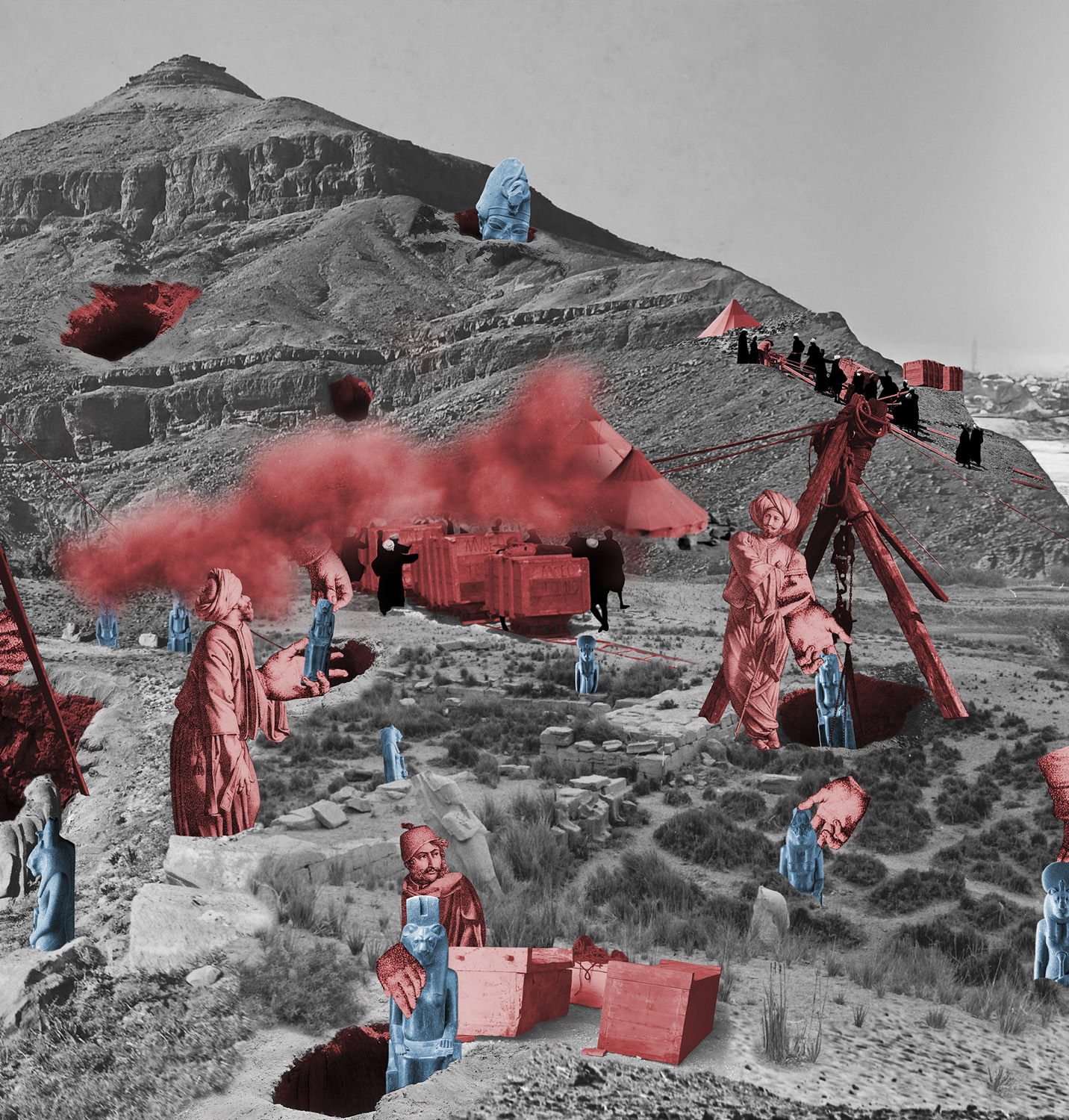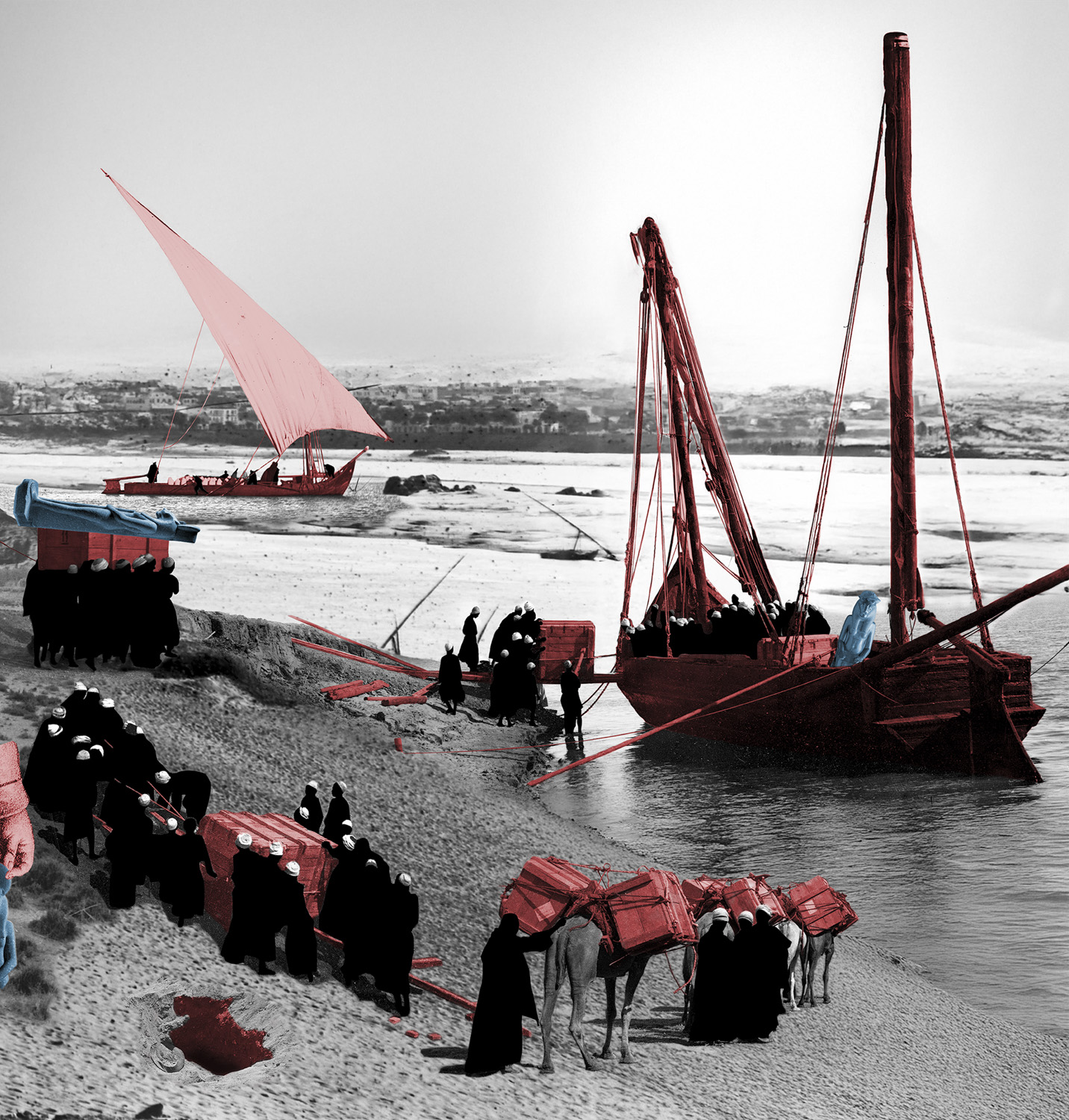Sara Sallam
Works
Books & Prints
Information
The Sun Weeps for the Land
and Calls from the Garden of Stones
2024Introduction
In the early 19th century, hundreds of statues of the goddess Sekhmet carved during the reign of Amenhotep III were unearthed and uprooted from Egypt. Their diaspora was facilitated by a colonial infrastructure enabling consuls to act as both diplomats and antiquities dealers. For the Italian-born French consul Bernardino Drovetti, this dual role proved lucrative when he sold his amassed collection, including twenty Sekhmet statues, to King Carlo Felice in 1824, forming the core of the Museo Egizio in Turin. This mixed-media installation comprises three artworks, A Broken Circle of Sisters, Prayer Beads, and Shifting Sands, Carving Scars, through which we are reminded that these sacred statues, which once safeguarded the ancient king, now linger anguished in museums after failing to fulfill their spiritual purpose.
A Broken Circle of Sisters
2024Introduction
This two-channel video piece is part of an mixed-media installation commissioned by the Museo Egizio in Turin titled, The Sun Weeps for the Land And Calls from the Garden of Stones. The installation addresses how hundreds of statues of the goddess Sekhmet carved during the reign of Amenhotep III were unearthed and uprooted from Egypt in the early 19th century. Their diaspora was facilitated by a colonial infrastructure enabling consuls to act as both diplomats and antiquities dealers. For the Italian-born French consul Bernardino Drovetti, this dual role proved lucrative when he sold his amassed collection, including twenty Sekhmet statues, to King Carlo Felice in 1824, forming the core of the Museo Egizio. In this installation of three artworks, we are reminded that these sacred statues, which once safeguarded the ancient king, now linger anguished in museums after failing to fulfill their spiritual purpose.
A Broken Circle of Sister unfolds in three acts. The first act addresses the extraction of statues from their original contexts in Egypt and their displacement to Italy. The second act takes the form of a ritual performed at the Museo Egizio, making and activating twenty-one cyanotype prints representing the twenty-one statues held at the museum. The ritual is inspired by the ancient Egyptian Opening of the Mouth ritual, where I attempt to imprint the statues’ divinity onto their paper form at the Museo Egizio so that the prints may act on behalf of the stones. The last act is a funerary procession returning these activated prints to Egypt, where I bury them at the statues’ birthplace in Aswan’s ancient quarries. Through this journey, they lament their failure to protect the king as their circle of protection lies broken due to their forced displacement.
Stills from A Broken Circle of Sisters
< < scroll horizontally > >
Prayer Beads
2024Introduction
Over three thousand years ago, an estimated seven hundred and thirty Sekhmet statues were carved for Amenhotep III’s mortuary temple. Together, they performed a year-long litany, appeasing this solar goddess day and night to protect the king. Due to their dispersion, the magnitude of the repetitive process of creating that many statues is impossible to perceive. This work comprises seven hundred and nine cyanotype (sun) prints representing all the statues now scattered across temples and museums, excluding the twenty-one at the Museo Egizio. These missing prints were returned to Egypt as part of the performative act in A Broken Circle of Sisters.

< < scroll horizontally > >
Shifting Sands, Carving Scars
2024Introduction
The first Sekhmet statue to reach Italy in 1759 was removed from the Temple of Mut by Italian botanist Vitaliano Donati, commissioned by King Charles Emmanuel III. Sixty years later, twenty more were excavated from the same temple by French sculptor Jean Jacques Rifaud for Drovetti. This collage reimagines the violent act of wounding the land to extract these twenty-one statues as the start of countless excavations, culminating in the discovery of Amenhotep III’s tomb in Thebes' mountains. It combines an 1819 painting of Drovetti and his agents, two archival photographs from the Brooklyn Museum showing the temple dotted with partially excavated statues, and 20th-century photographs from the Museo Egizio archives documenting the removal of antiquities from their funerary contexts.
Installation View at Museo Egizio
